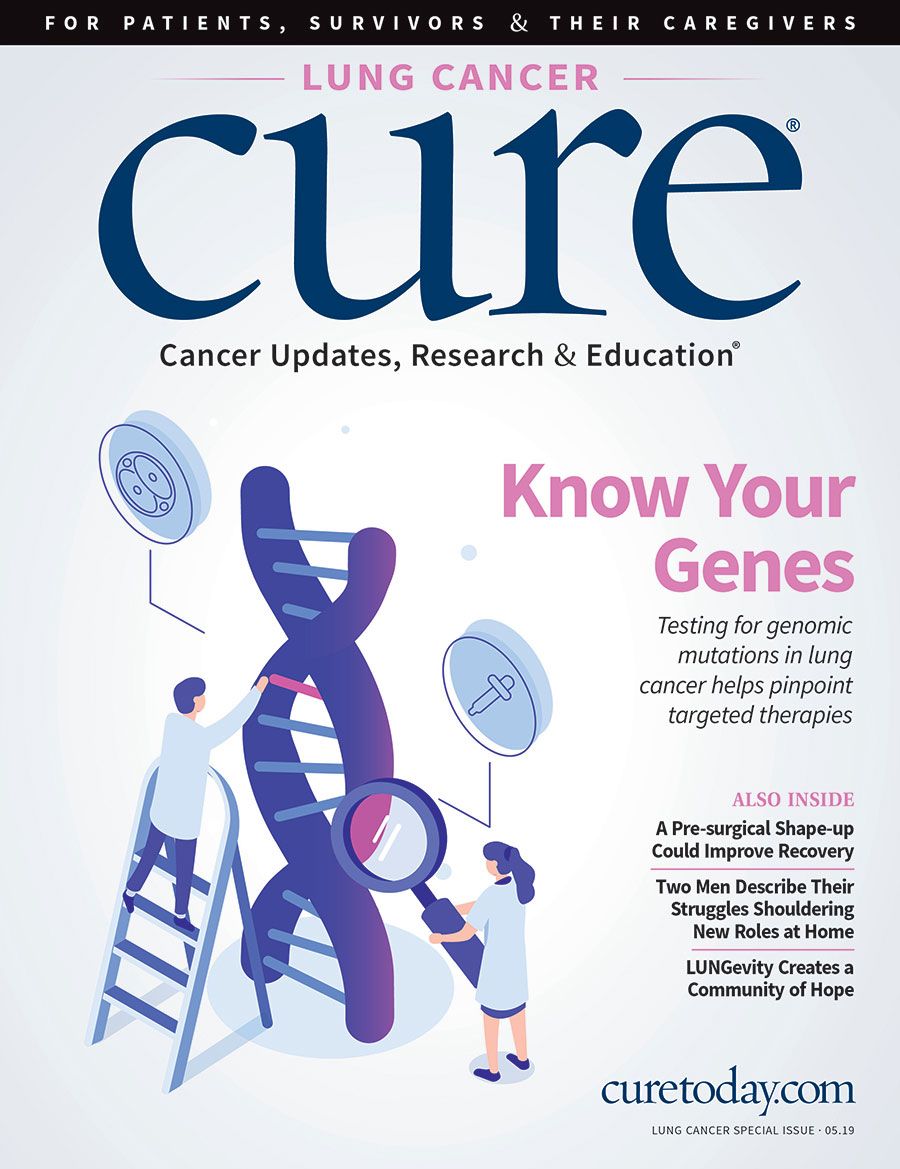The Future Looks Brighter: State of Treatment for Small Cell Lung Cancer
With nearly 30 years of experience in thoracic oncology, one expert discusses what lies ahead for patients with small cell lung cancer.
Small cell lung cancer (SCLC) occurs less often than non-small cell lung cancer (NSCLC) but is more aggressive and challenging to treat.
In an interview with CURE ®, Dr. Ravi Salgia, the Arthur & Rosalie Kaplan Chair in Medical Oncology and associate director of clinical sciences at City of Hope’s comprehensive cancer center, talks about the state of SCLC.
CURE®: What is changing in small cell lung cancer research?
Salgia: Lung cancer incidence is decreasing, from the most recent statistics in the United States. Most lung cancer cases are non-small cell, and a small fraction — less than 15 percent — are small cell. When I started my career almost 30 years ago, SCLC was at a higher incidence, approximately 25 percent or so, and so the incidence is going down. That’s due to smoking rates declining and smoking cessation.
What’s tough about lung cancer is that most of the time, it presents as metastatic disease, and that type of disease is tough to treat. Early-stage disease has a little bit better of an outcome, but we still have a long way to go. Even though we have been doing research for a long time, we know that we haven’t made as many strides against SCLC as we have with NSCLC, especially for the targeted therapies and immunothera­pies that have come to fruition. For SCLC, we know that chemo­therapy and radiation therapy work relatively well upfront, but we know it has a high rate of recurrence. Immunotherapy seems to be one of the breakthroughs and, hopefully, that will continue to be as we go forward.
How has immunotherapy changed the course for patients?
Initially, we used to think that SCLC was not immunogenic and we couldn’t do too much with immunotherapy. Several trials had been tried for a long time in terms of vaccine therapies, and they didn’t work. But immunotherapy with checkpoint inhibitors are seeming to work. In a subset of patients, we know that immunotherapy is quite effective for our patients.
What type of research is being conducted on SCLC at City of Hope?
We have a large program for SCLC. We need to be able to think about (doing) early detection. As we know, this low-dose CT (scan) has been effective for smokers and previous smokers who developed NSCLC, but it hasn’t been effective for SCLC. So can we develop early-stage disease surveillance or screening for SCLC as biomarkers? Some of the studies that are ongoing at City of Hope are developing biomarkers, whether they be blood based or radiological based, and we are even using mathematical oncology to try to detect these biomarkers themselves. That’s quite exciting.
For limited-disease SCLC, can one think about possibilities of the standard therapy — chemotherapy and radiation therapy — and maybe immunotherapy as a type of maintenance therapy?
For extensive-stage disease, which involves about two-thirds of our patients who get diagnosed with lung cancer, immunotherapy is going on. But then, we also have a lot of poten­tial for targeted therapeutics. Are there other targets for SCLC that are yet undiscovered? We also have consideration for CAR (chimeric antigen receptor)-T cell therapy for SCLC.
Preclinically, in the old days, it would take us a long time to develop concepts and bring them to clinical fruition. However, we are now developing precision medicine concepts by using different model systems, including various multicellular organisms for high-throughput analysis and, ultimately, novel therapies.
Where do you see research and treatment going in the future?
Any therapy that works we will take. Immunotherapy has helped us break the code a little bit but not enough. So, clearly, combi­nations of immunotherapies with radiation or with chemo­therapies are going to be important. Therapeutic targeting will also be important. I see, in the next five years, a revolution for SCLC that will help us break open the code even more.
What message do you want to share with patients who are fighting this disease?
Therapy is very important for SCLC, no matter what stage. Clinical trials are incredibly important, so if clinical trials can be considered, that may help patients do better compared with the standard of care — and also help other people in the future. But then, from the preclinical studies, we should be able to learn much faster and bring that to clinical fruition. I’m optimistic for patients with SCLC, but we need to do more, and we clearly need to have much more funding to be able to do this kind of research.

RAVI SALGIA, M.D., PH.D., is the Arthur & Rosalie Kaplan Chair in Medical Oncology and the associate director for clinical sciences at City of Hope’s comprehensive cancer center.
